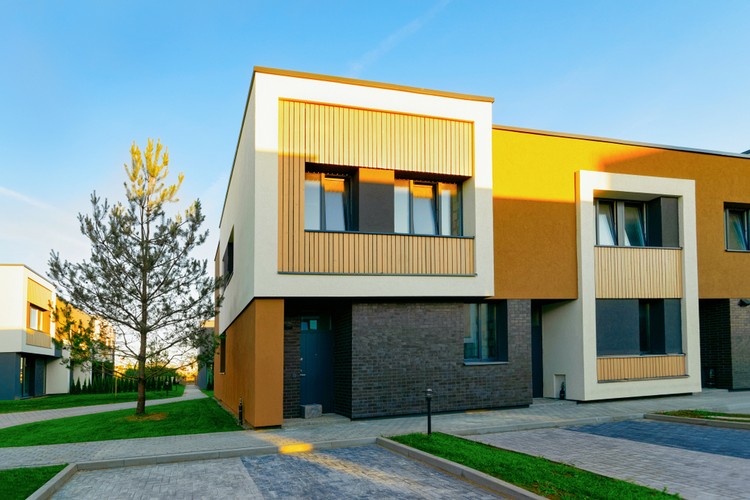Prefab Living in the UK: What to Know Before You Decide
Prefab homes are quickly becoming a smart housing solution across the UK. With rising property prices and growing interest in sustainable living, more people are exploring modular and prefabricated options. These homes are not only more affordable but also faster to build and easier to customise. Whether you’re downsizing, looking for a garden home, or exploring a flexible living option for retirement, it’s worth understanding how prefab living works. Let’s take a closer look at the key features, benefits, and things to consider before you decide.

What exactly are prefab homes and how do they work?
Prefab homes, short for prefabricated homes, are houses manufactured off-site in a factory setting and then transported to the final location for assembly. This construction method involves creating standardised sections or modules that are later fitted together on-site. The process typically includes:
-
Design and planning
-
Factory production of components
-
Transportation to the building site
-
On-site assembly and finishing
Prefab homes can range from simple modular structures to complex, architecturally designed houses. The key advantage lies in the controlled manufacturing environment, which often results in higher quality and precision compared to traditional on-site construction.
What are the main benefits of choosing a prefab home in the UK?
Opting for a prefab home in the UK comes with several advantages:
-
Reduced construction time: Prefab homes can be built up to 50% faster than traditional houses, as weather delays are minimised and multiple processes can occur simultaneously.
-
Cost-effectiveness: Factory production often leads to lower labour costs and reduced material waste, potentially resulting in overall savings.
-
Quality control: The controlled factory environment allows for stricter quality checks and consistent production standards.
-
Energy efficiency: Many prefab homes are designed with energy-saving features, such as high-quality insulation and modern heating systems.
-
Customisation options: Contrary to popular belief, prefab homes offer a wide range of design choices and can be tailored to individual preferences.
-
Reduced environmental impact: Factory production typically generates less waste and allows for more efficient use of materials.
What types of prefab homes are available in the UK market?
The UK prefab market offers various options to suit different needs and preferences:
-
Modular homes: Fully-fitted houses constructed in sections and assembled on-site.
-
Panel systems: Flat-pack style homes where panels are transported and erected on-site.
-
Timber frame houses: Eco-friendly options often using sustainably sourced wood.
-
Structural Insulated Panels (SIPs): Energy-efficient panels that form the walls, roof, and floors.
-
Shipping container homes: Upcycled containers converted into living spaces.
-
Eco-pods: Compact, self-contained units often used for additional living space or holiday lets.
How do prefab homes compare to traditional construction in terms of cost?
While prefab homes can offer cost savings, the actual price depends on various factors:
| Type of Home | Estimated Cost (£ per sq m) | Time to Build |
|---|---|---|
| Traditional Brick & Block | 1,500 - 2,500 | 6-12 months |
| Timber Frame Prefab | 1,200 - 2,000 | 3-6 months |
| Modular Prefab | 1,000 - 1,800 | 2-4 months |
| Container Conversion | 800 - 1,500 | 1-3 months |
Prices, rates, or cost estimates mentioned in this article are based on the latest available information but may change over time. Independent research is advised before making financial decisions.
It’s important to note that while the initial construction costs of prefab homes may be lower, additional expenses such as land purchase, site preparation, and utility connections should be factored into the overall budget.
What are the potential challenges of prefab living in the UK?
While prefab homes offer numerous benefits, there are some challenges to consider:
-
Planning permission: Some local authorities may have specific regulations for prefab structures.
-
Financing: Some lenders may be less familiar with prefab homes, potentially making mortgages more challenging to secure.
-
Transportation limitations: The size of prefab modules may be restricted by road transport regulations.
-
Site accessibility: Some locations may be difficult to access with large prefab components.
-
Perception: Despite improvements in quality and design, some people still associate prefab homes with post-war temporary housing.
Which UK prefab designs are leading the market in 2023?
The UK prefab market is evolving rapidly, with several companies offering innovative designs:
| Company | Key Features | Price Range (£) |
|---|---|---|
| Huf Haus | High-end, glass and wood designs | 500,000 - 1,000,000+ |
| Baufritz | Eco-friendly, customisable homes | 300,000 - 800,000 |
| Trivselhus | Scandinavian-inspired, energy-efficient | 200,000 - 600,000 |
| ilke Homes | Affordable modular homes | 150,000 - 350,000 |
| Eco Space Studios | Compact, sustainable garden rooms | 20,000 - 50,000 |
Prices, rates, or cost estimates mentioned in this article are based on the latest available information but may change over time. Independent research is advised before making financial decisions.
These companies offer a range of options from compact garden studios to full-sized family homes, catering to various budgets and preferences.
Prefab homes in the UK present an exciting alternative to traditional housing. They offer potential cost savings, faster construction times, and energy-efficient living. However, it’s crucial to carefully consider factors such as local regulations, financing options, and site suitability before making a decision. As the market continues to evolve, prefab living is likely to play an increasingly significant role in addressing the UK’s housing needs.




